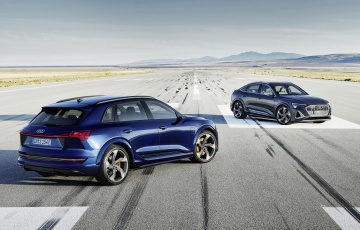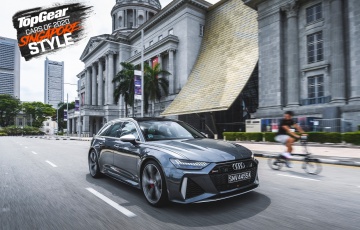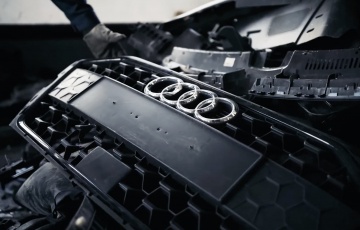Audi’s e-tron GT charges into Singapore
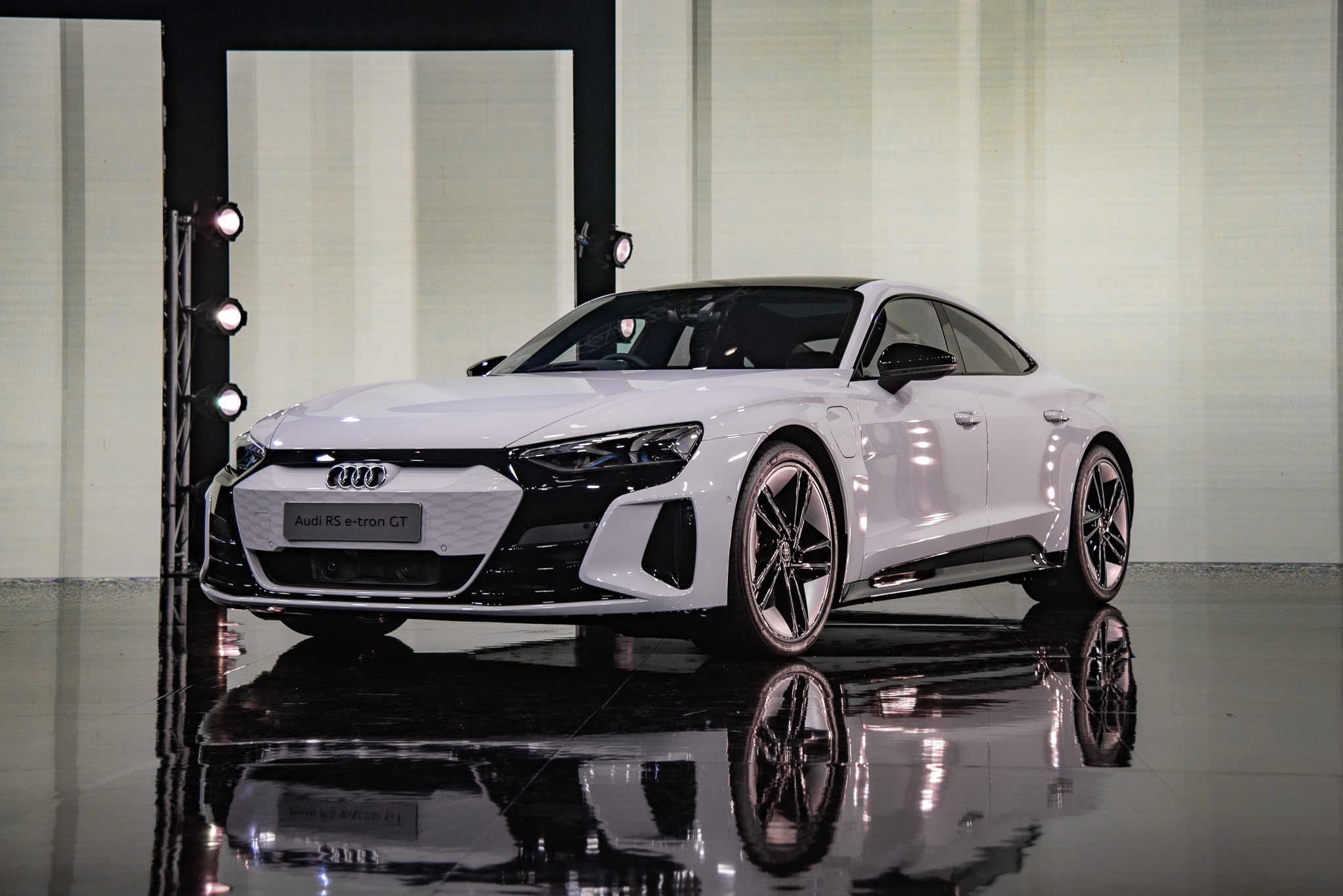
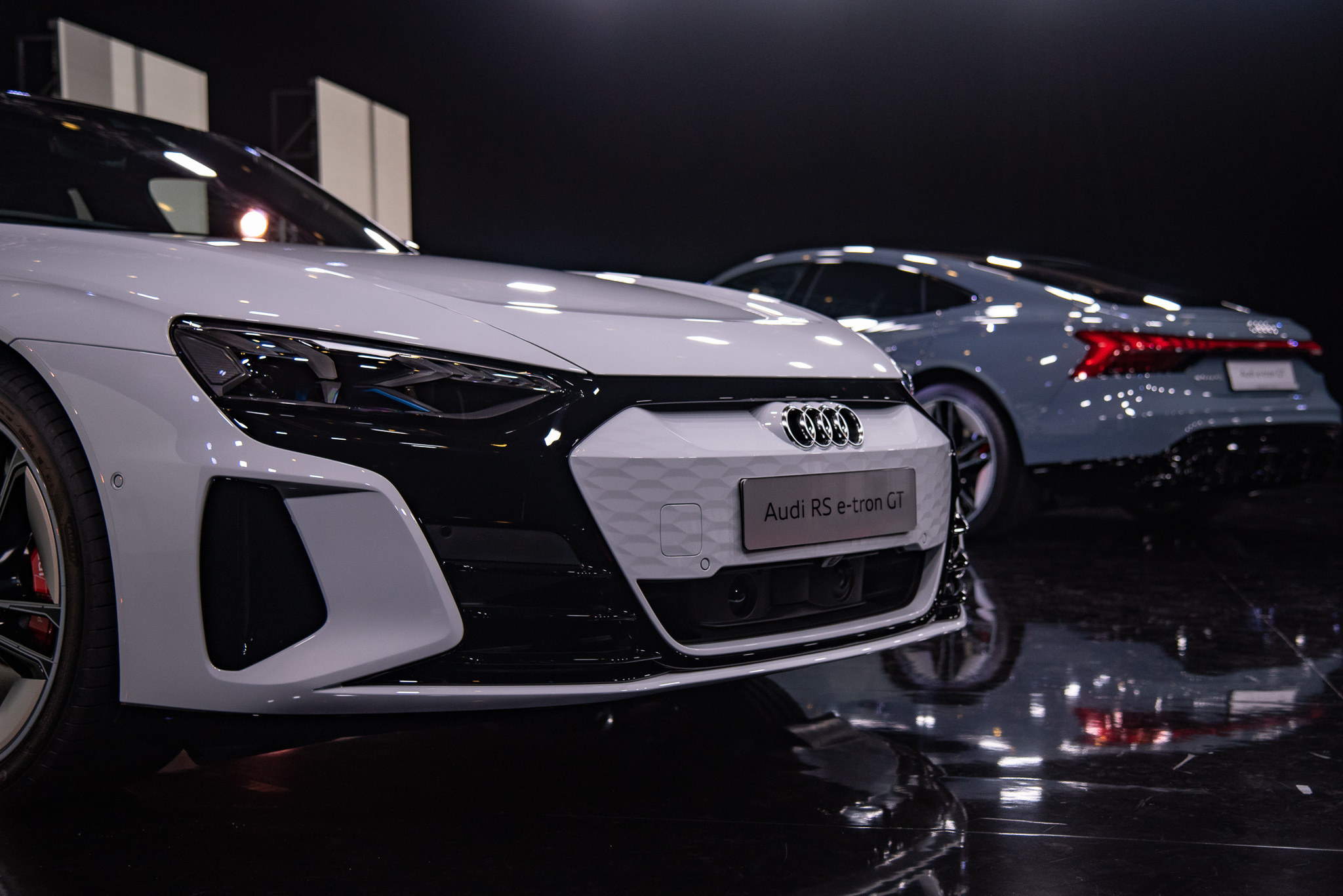
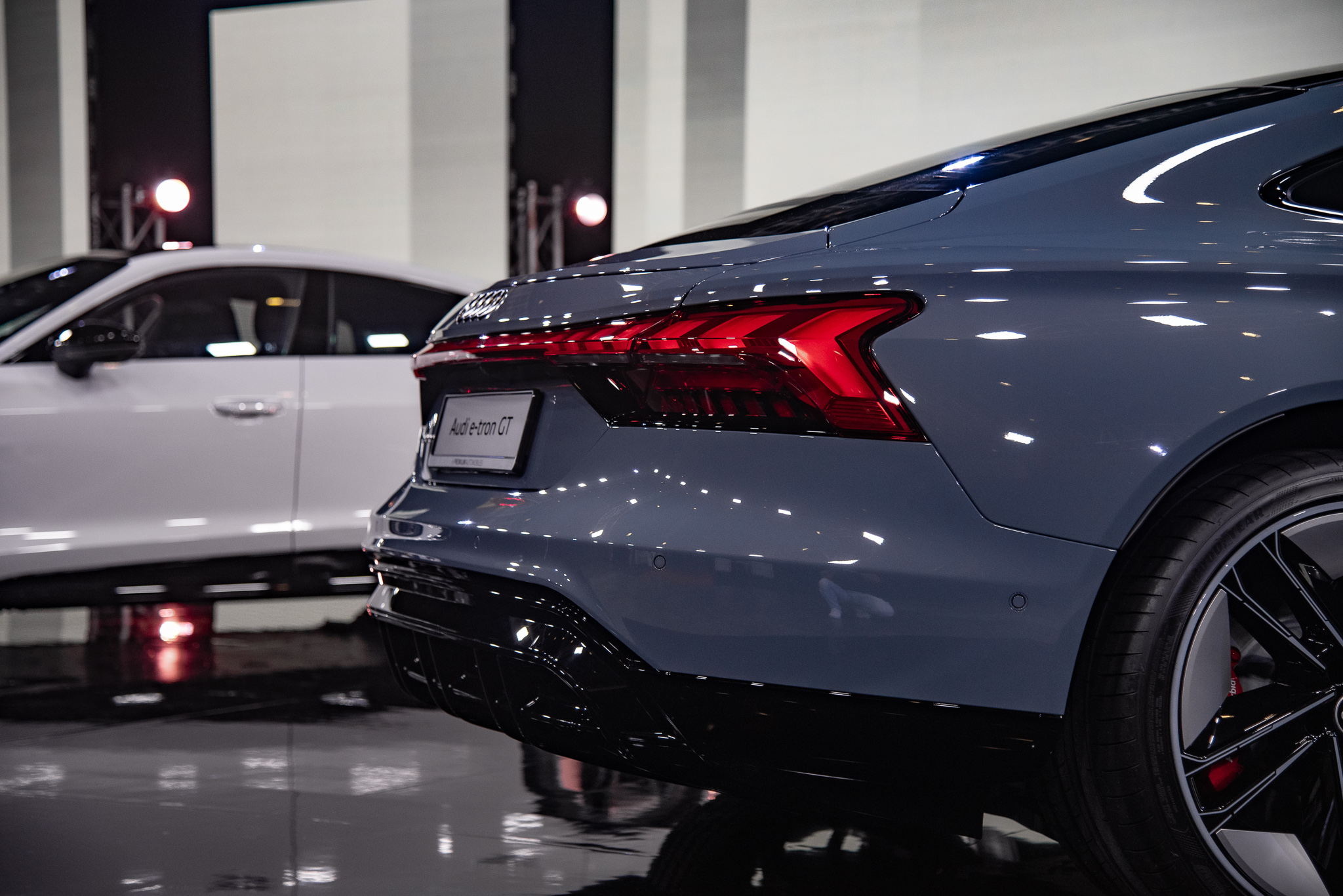
Singapore - Charge, geddit? Cause it’s electric. Bad jokes aside, this is it: The all new Audi e-tron GT and RS e-tron GT. We’ve had a look at it in the flesh, and it’s a stunner.
It may not be the first electric vehicle produced by Audi, but it is the first BEV that’s been fettled by the brand’s RS division.
Though it shares 40 per cent of its internal components with the Porsche Taycan, the e-tron GT is an entirely different prospect altogether.
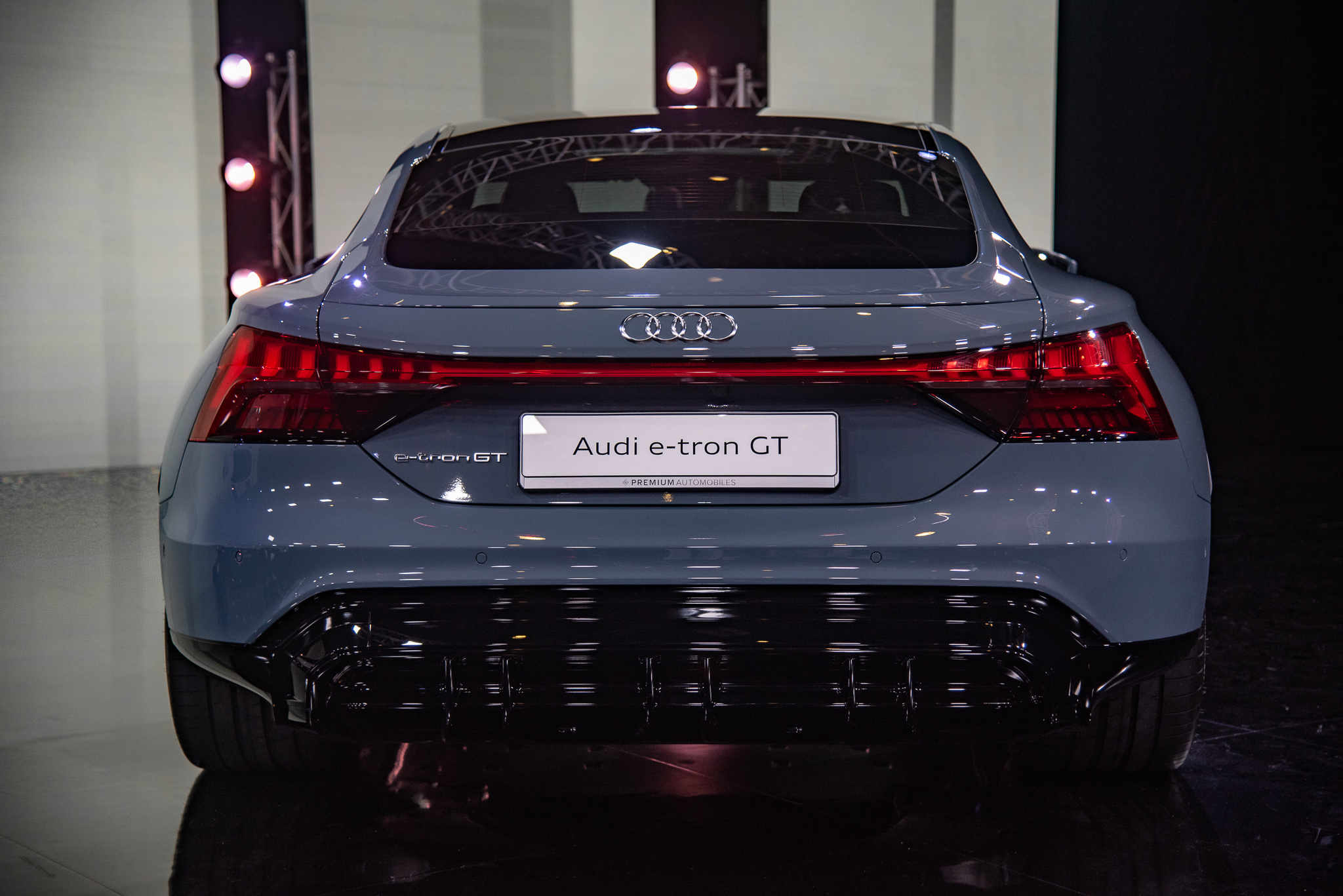
Like the Taycan, both are dual-motor, four-wheel drive cars with a 93kWh battery pack and blistering performance.
In fact, the top-spec RS e-tron GT is essentially a re-bodied Porsche Taycan Turbo. Similar power figures, albeit wrapped up under a more placid aluminium shell.

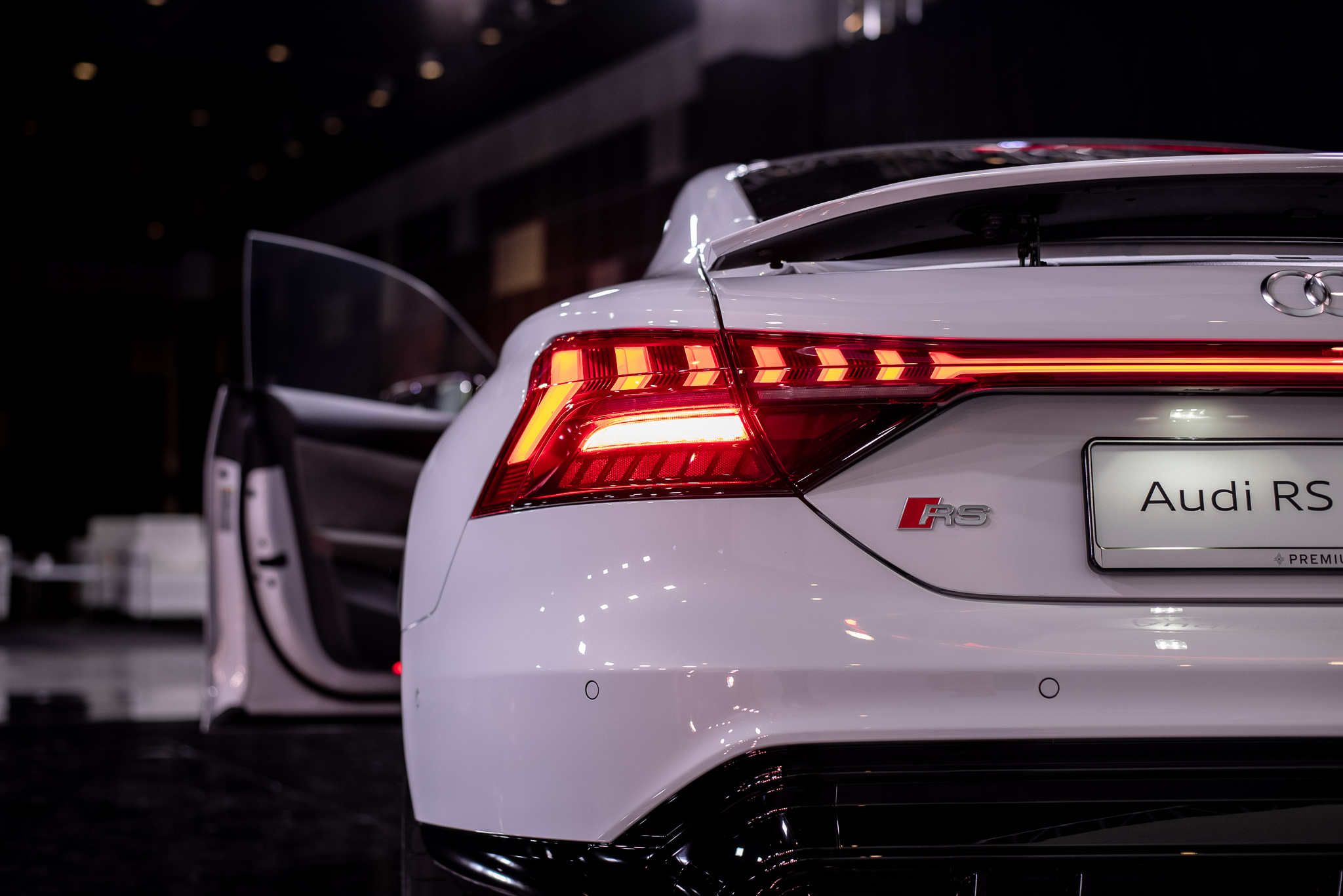
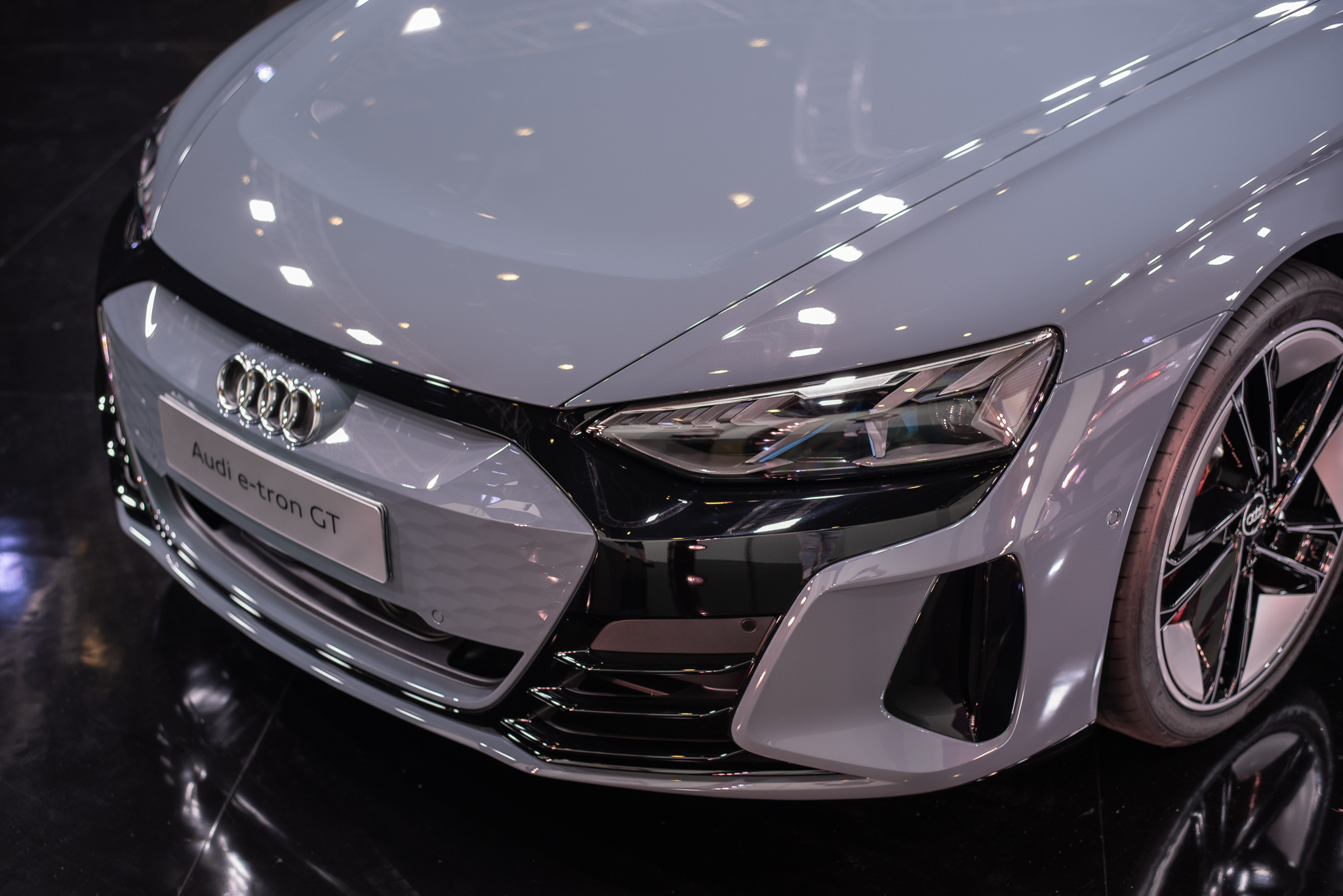
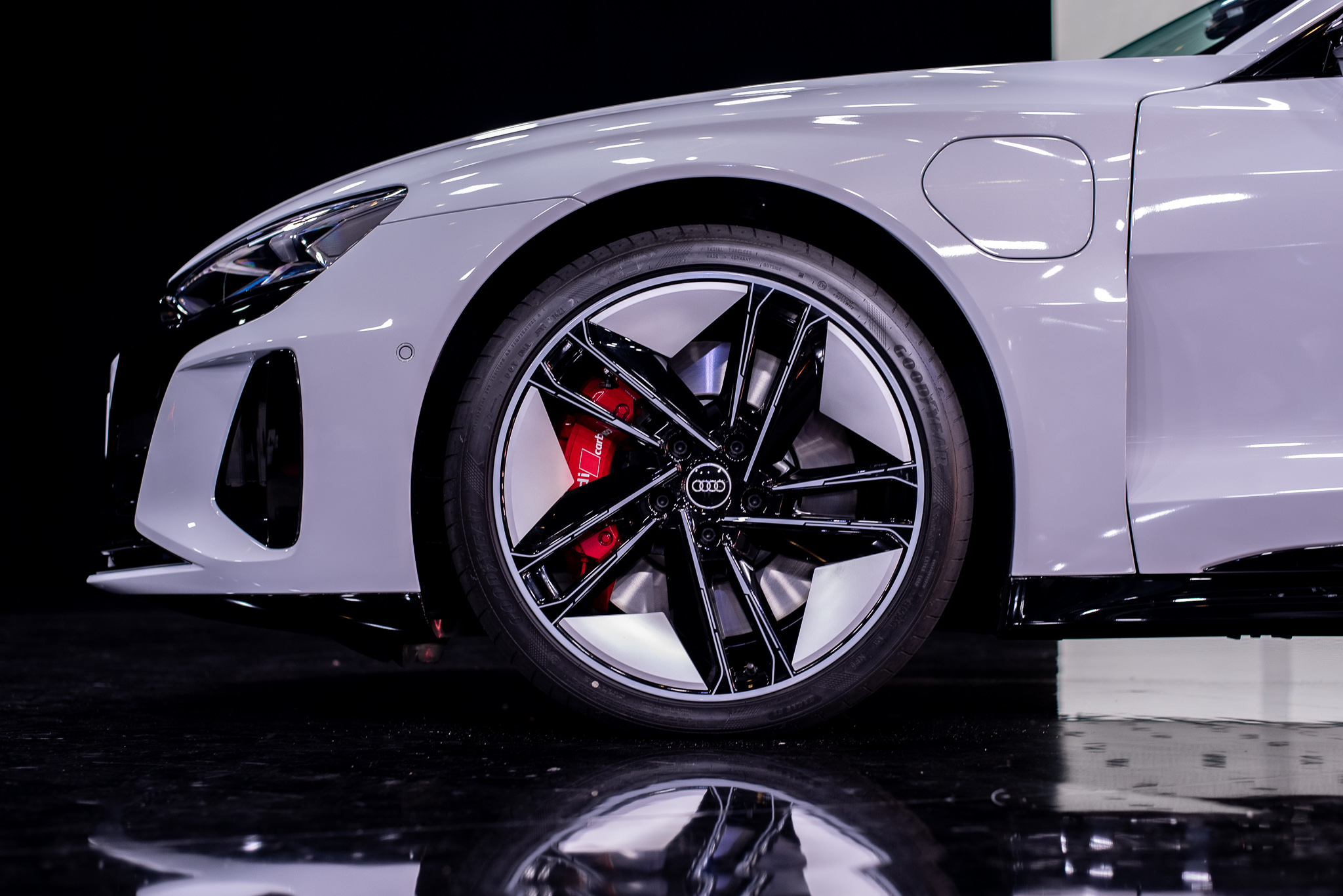
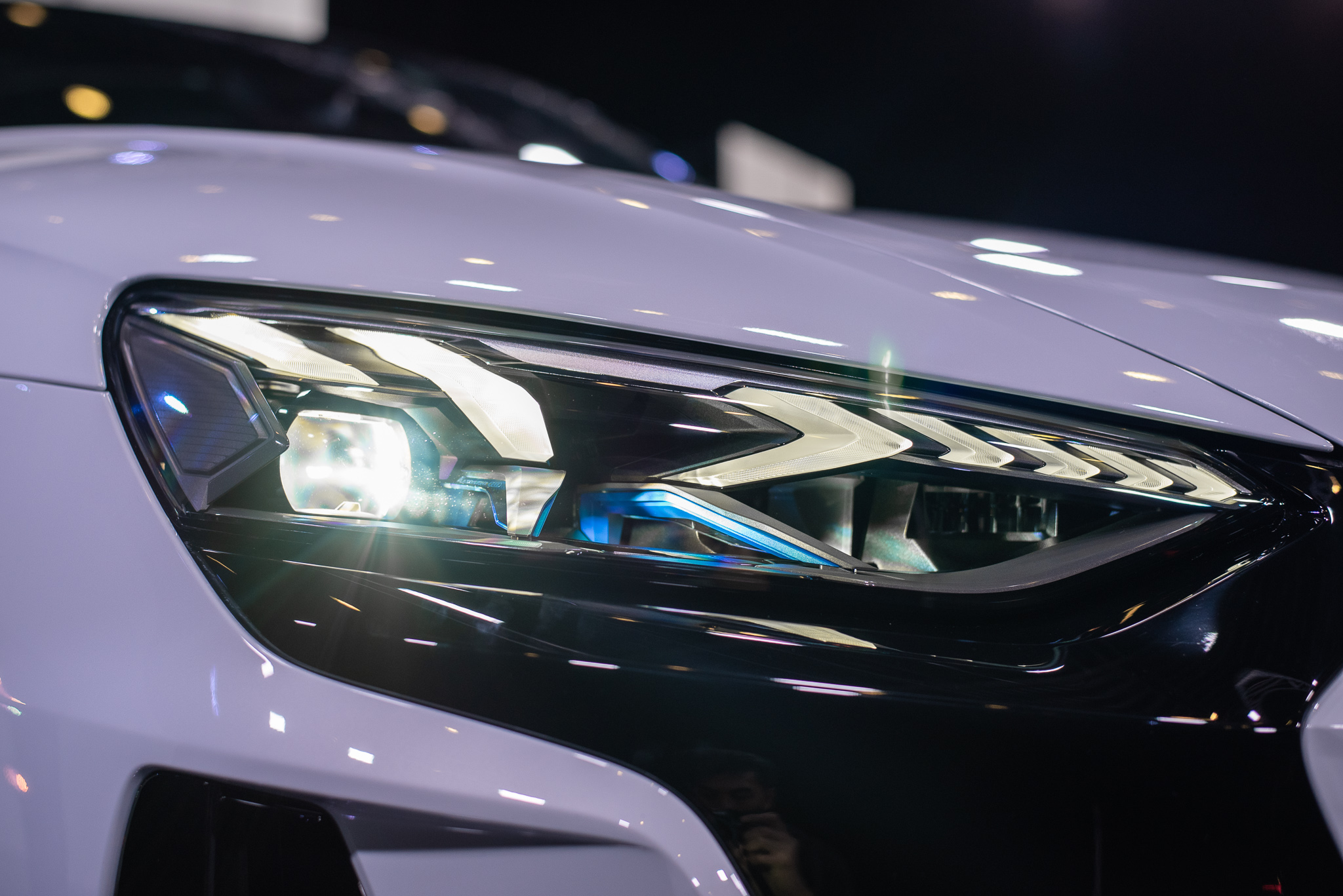
Apart from a few RS badges, the e-tron GT and RS e-tron GT are identical in appearance, save for some blacked out bits of trim.
Buyers can choose to outfit their e-tron GT with optional gloss black grille surrounds, or a carbonfibre roof to replace the panoramic glass roof that comes as standard.
Audi’s matrix LED headlamps are standard fit for the standard e-tron GT, while the RS e-tron GT comes fitted with Audi’s optional laser headlights.
Buyers also have several choices when it comes to stopping power. As standard, the e-tron GT comes fitted with steel brakes.
There are optional tungsten carbide coated discs, which have better thermal efficiency as compared to their steel counterparts.
Or you could option your car with carbon-ceramic discs, though the car’s regenerative braking system doesn’t actually necessitate that much additional stopping power.
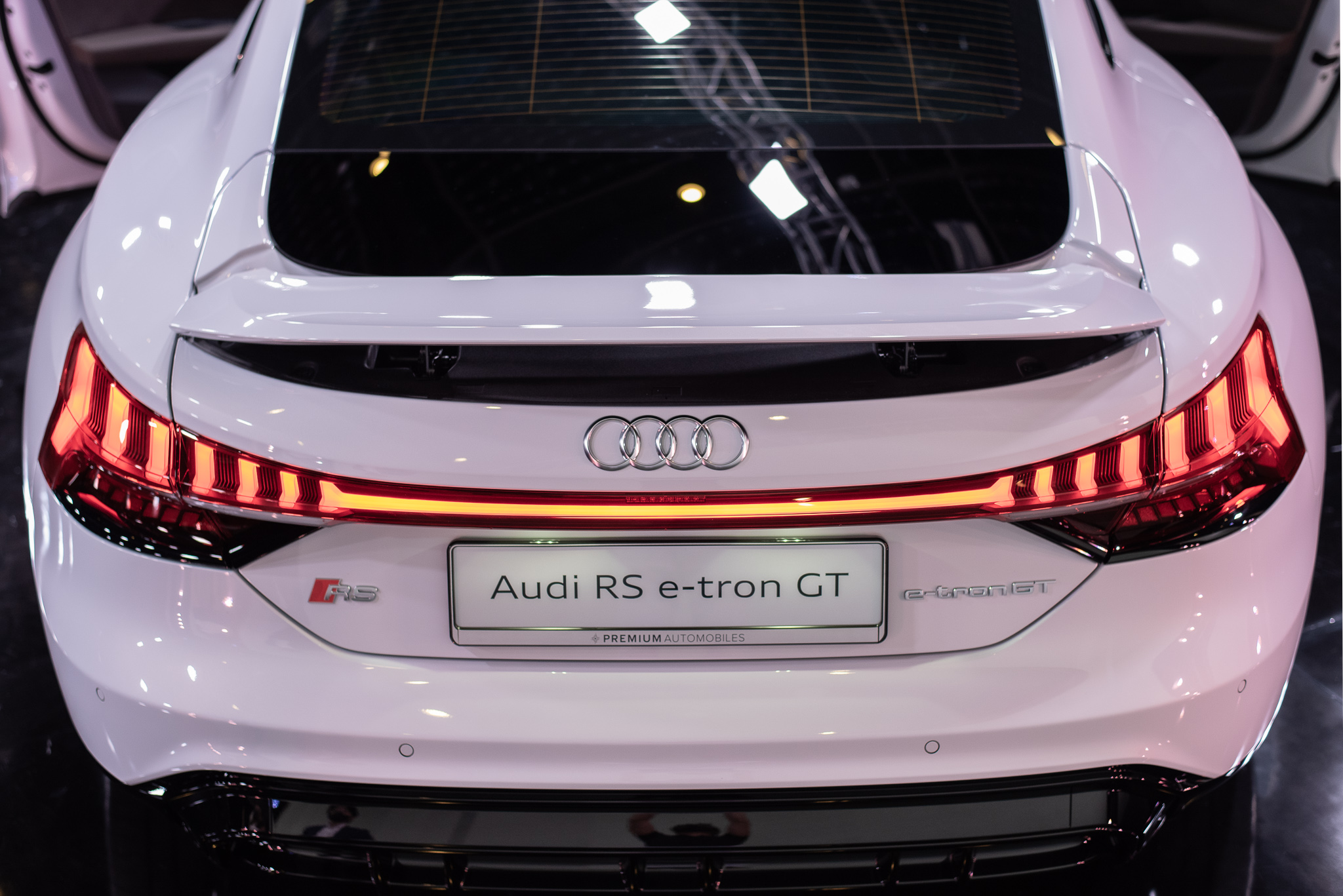
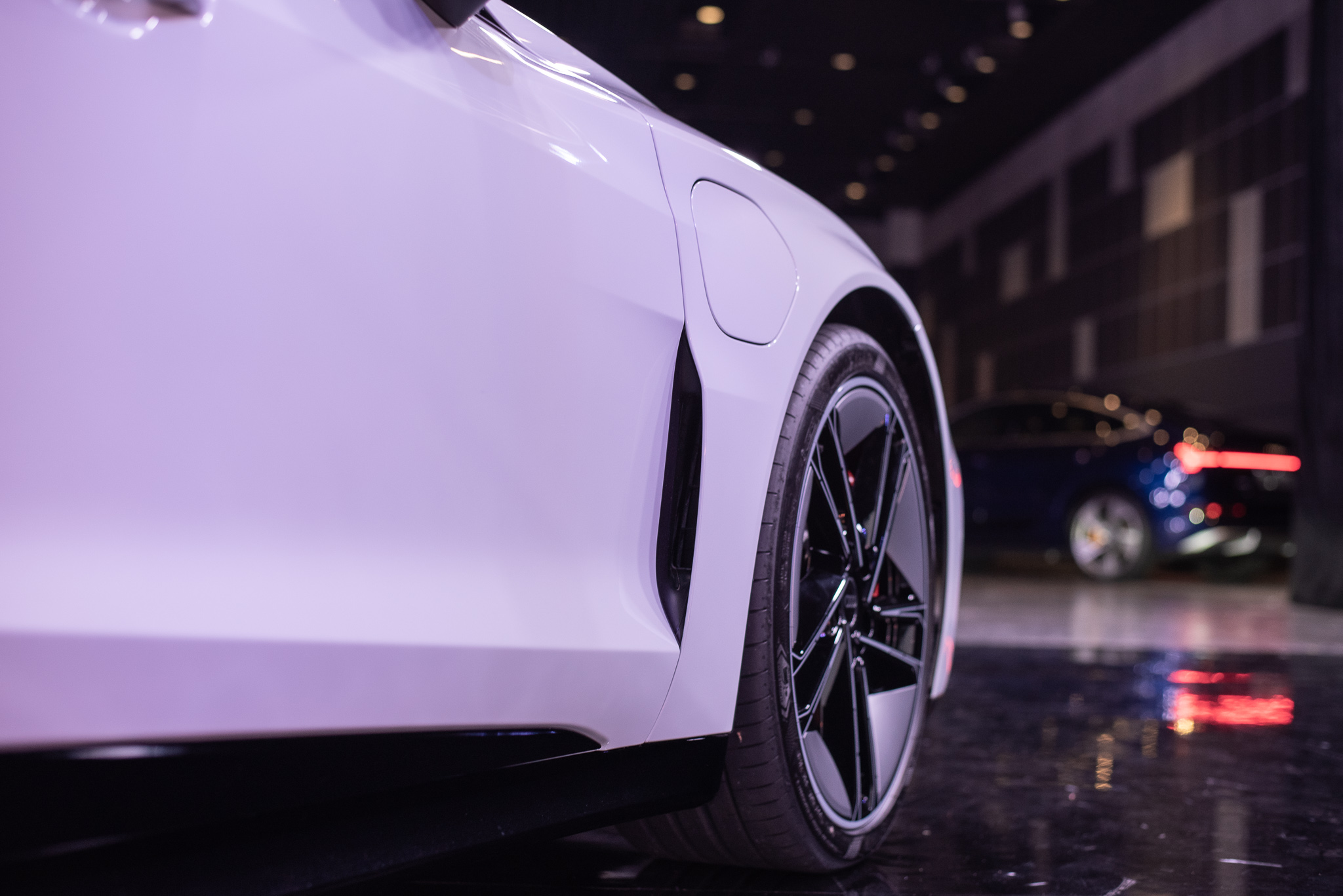
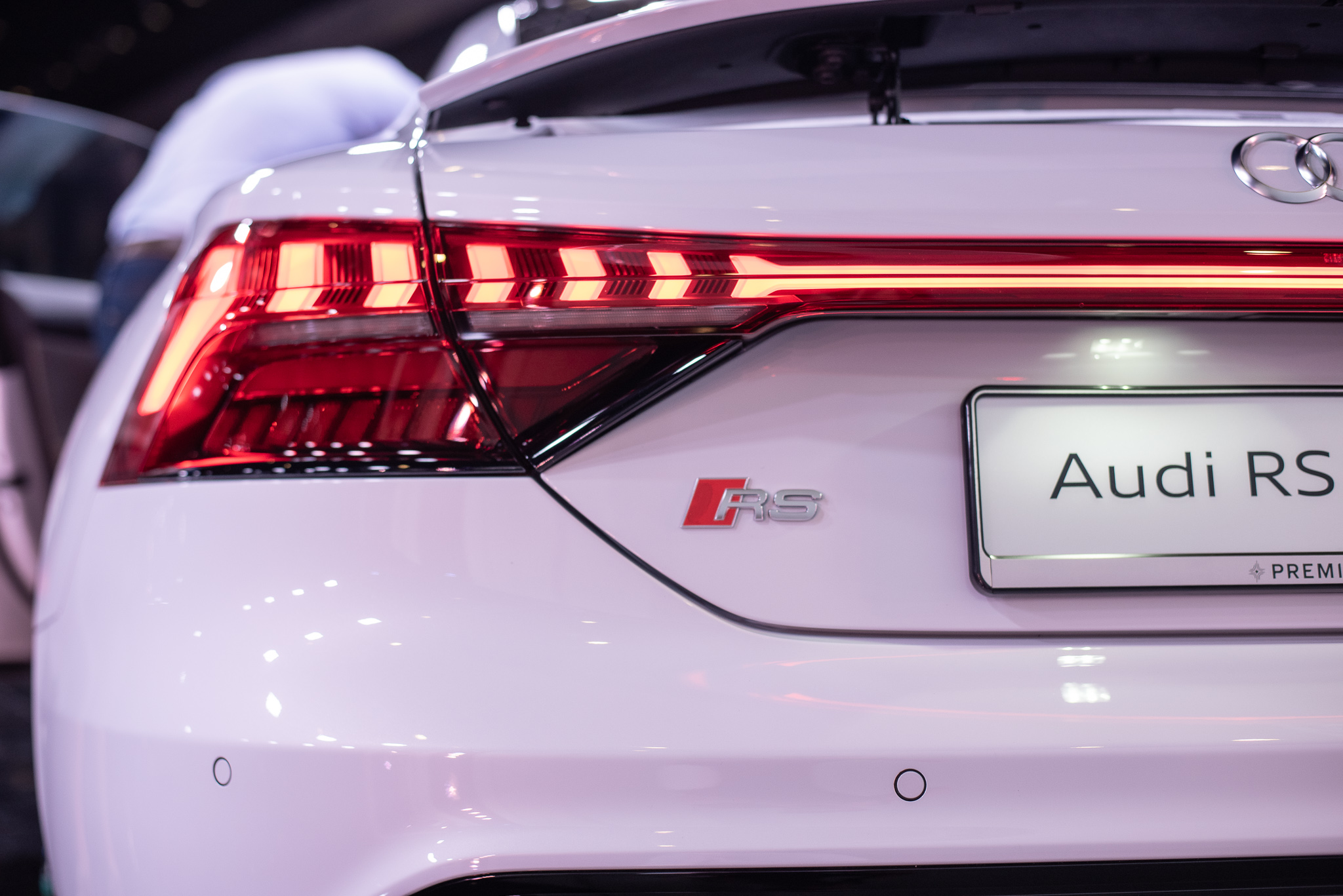
Around the back, there is a continuous light bar spanning across the boot lid just under the active rear spoiler, and a gloss black rear diffuser that ties the rear end rather nicely.
However, these sporty additions to the car aren’t just a party trick. Many of the creases and aero tweaks serve an actual purpose.
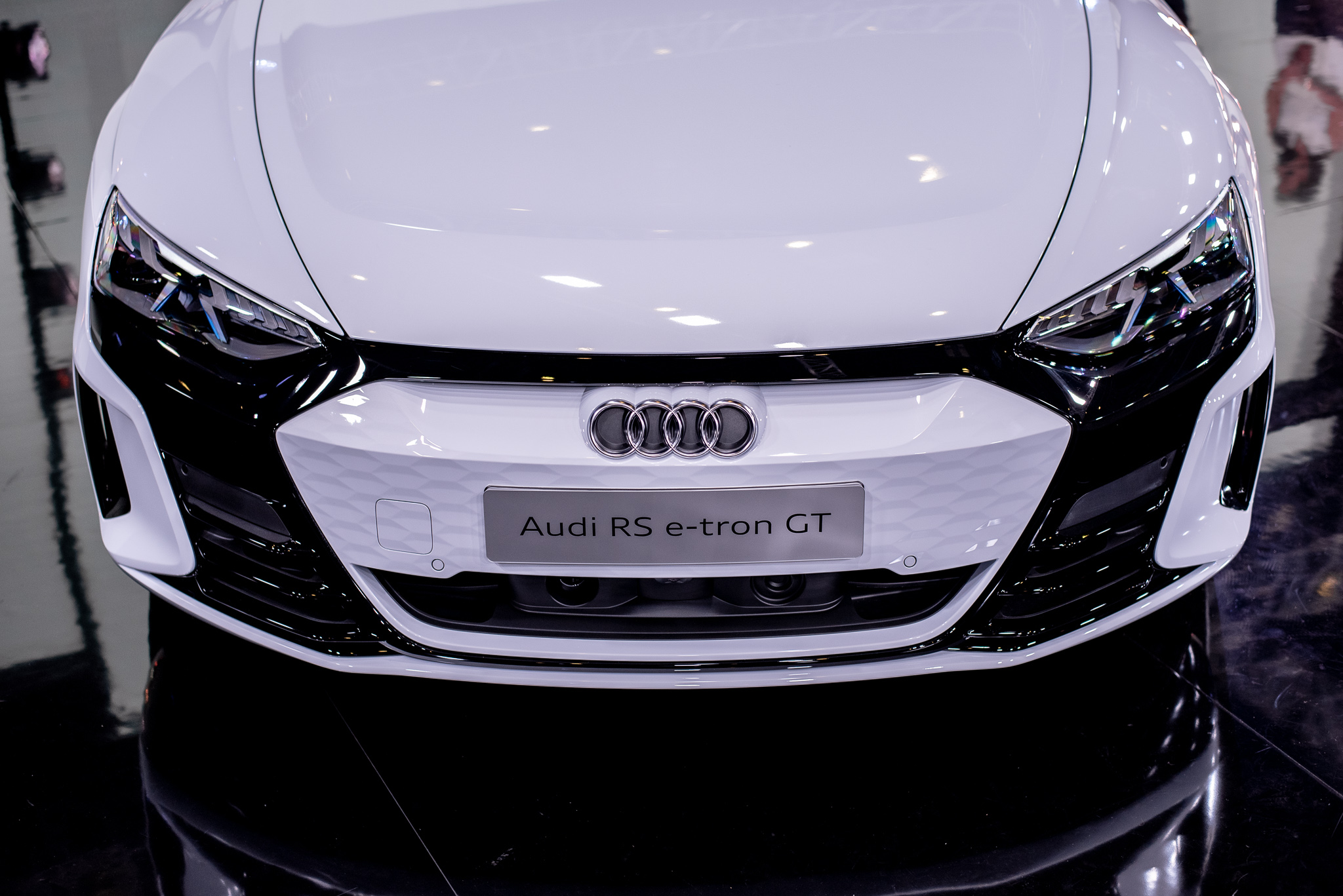
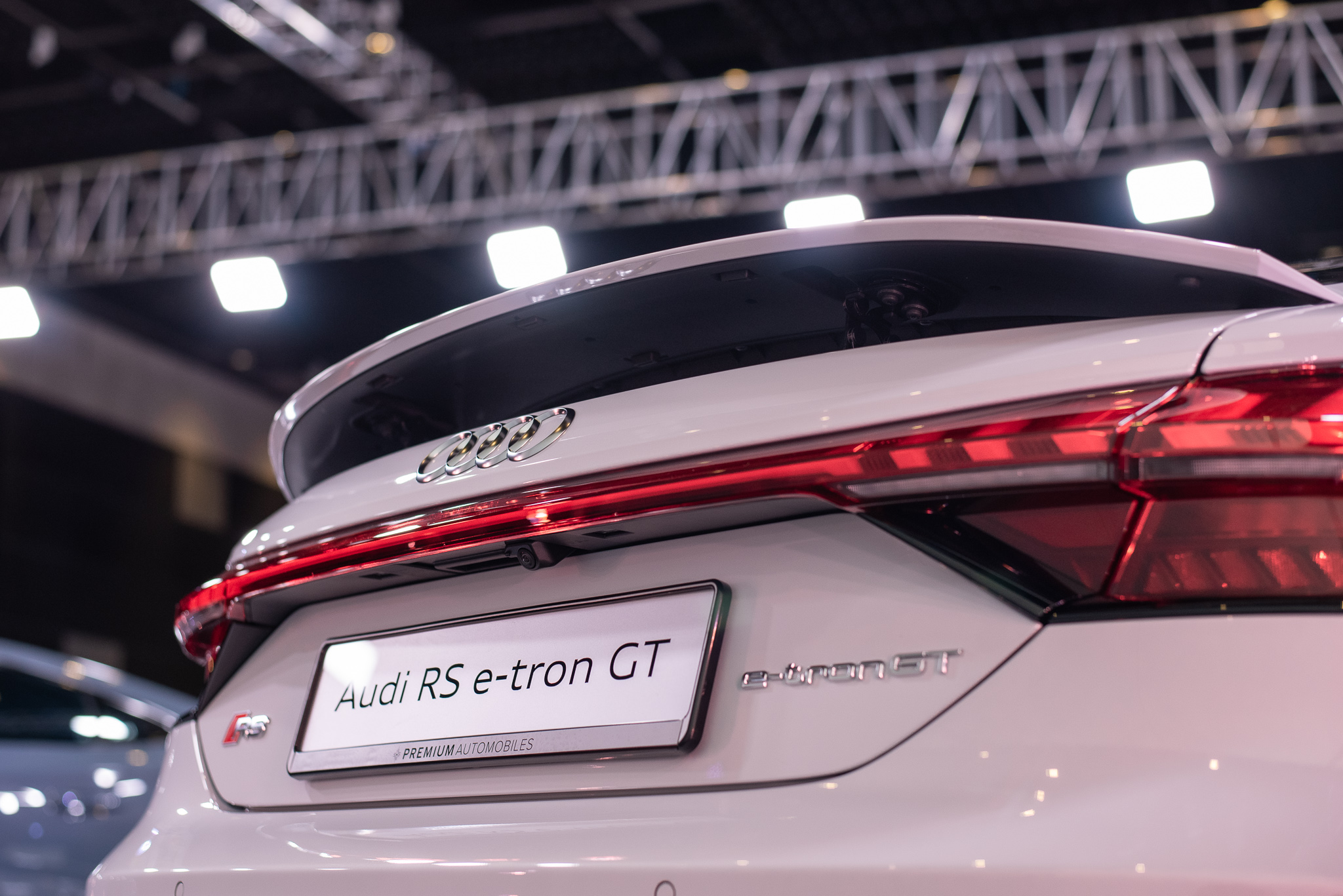

Efficiency is the name of the game, and Audi’s engineers have imbued the car with numerous functional design cues that alleviate wind resistance.
The traditional Singleframe grille has been closed off in favour of aerodynamic performance, synonymous with most other BEVs.
There are two active vent flaps under the dimpled “grille” that provide cooling for the drivetrain and brakes whenever the car deems fit.
The rear spoiler can be deployed in different positions to provide either downforce or aerodynamic efficiency.
The rims are also aerodynamically optimised, with plastic inserts to further reduce drag and turbulence.
The fully panelled undercarriage even features golfball-sized divots to aid the car’s underbody airflow.
All this helps the car achieve a drag coefficient rating of just Cd 0.24.
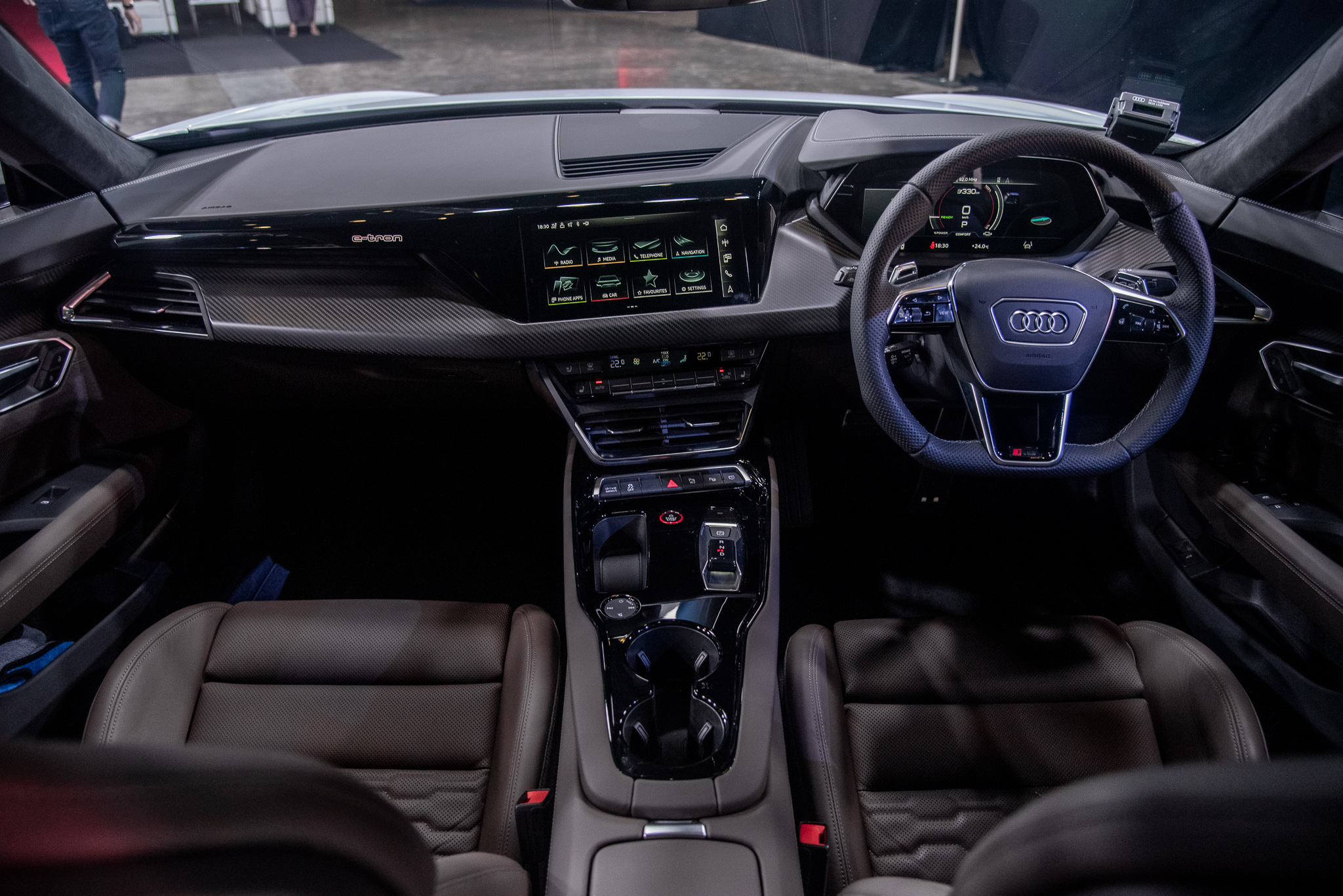
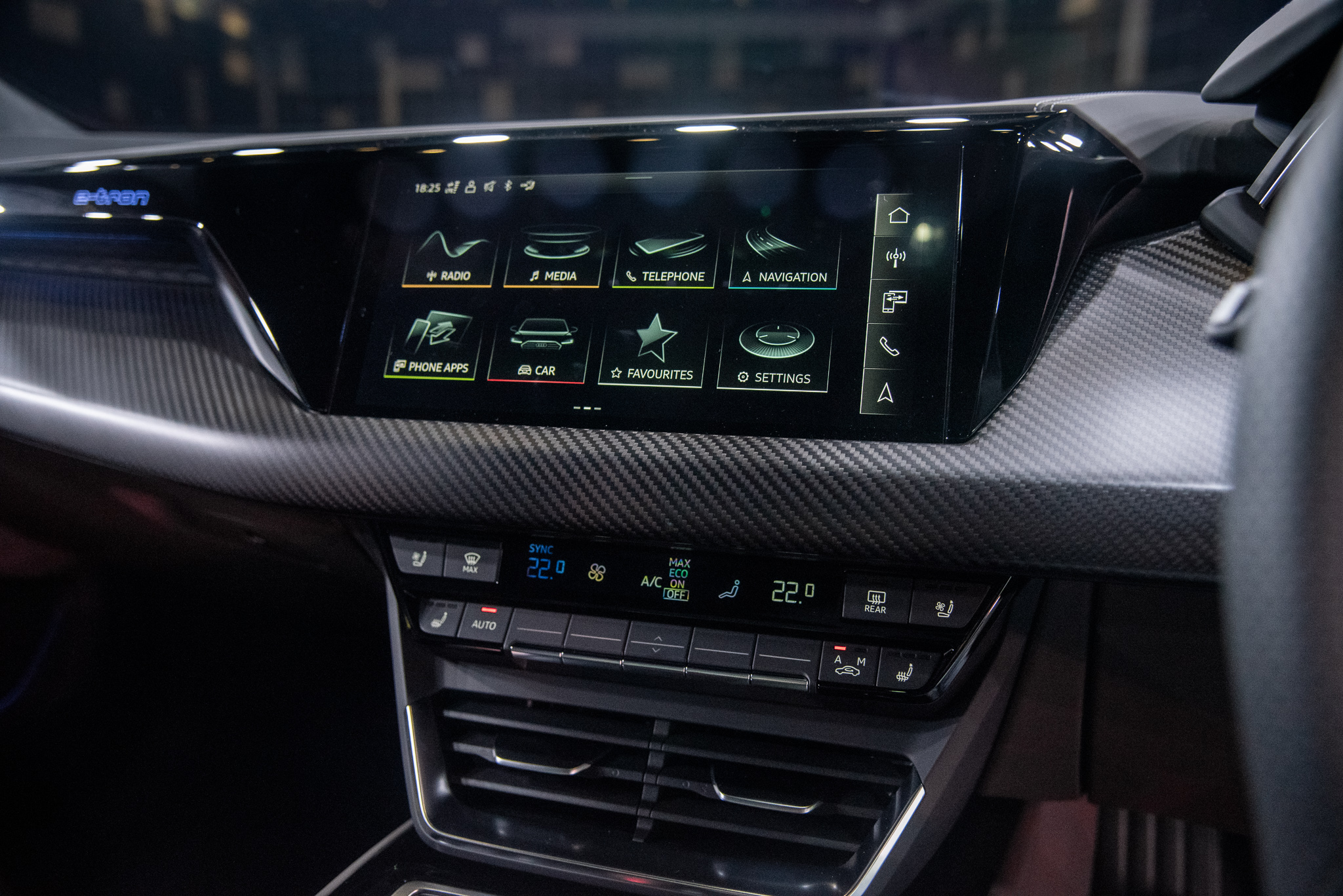
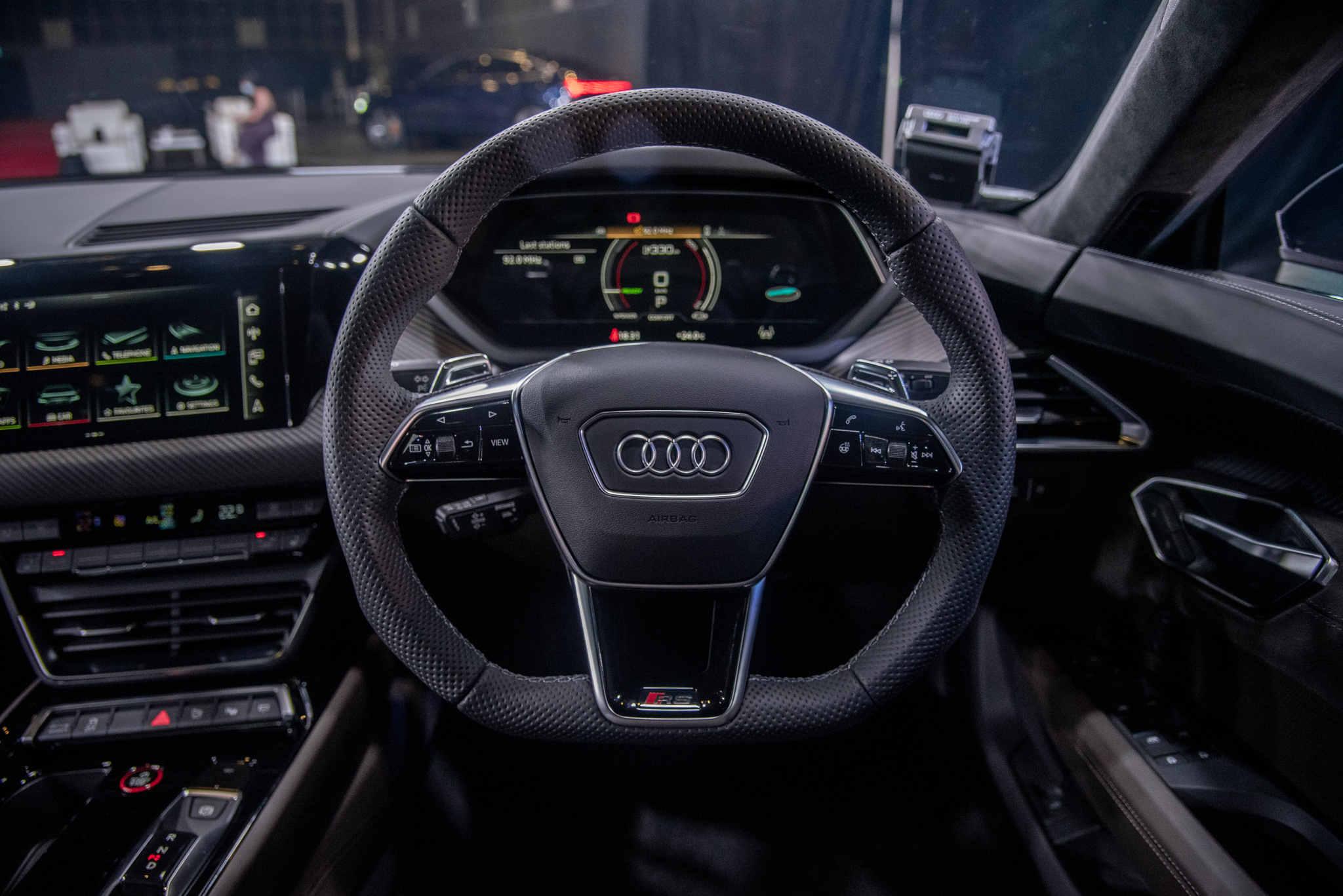
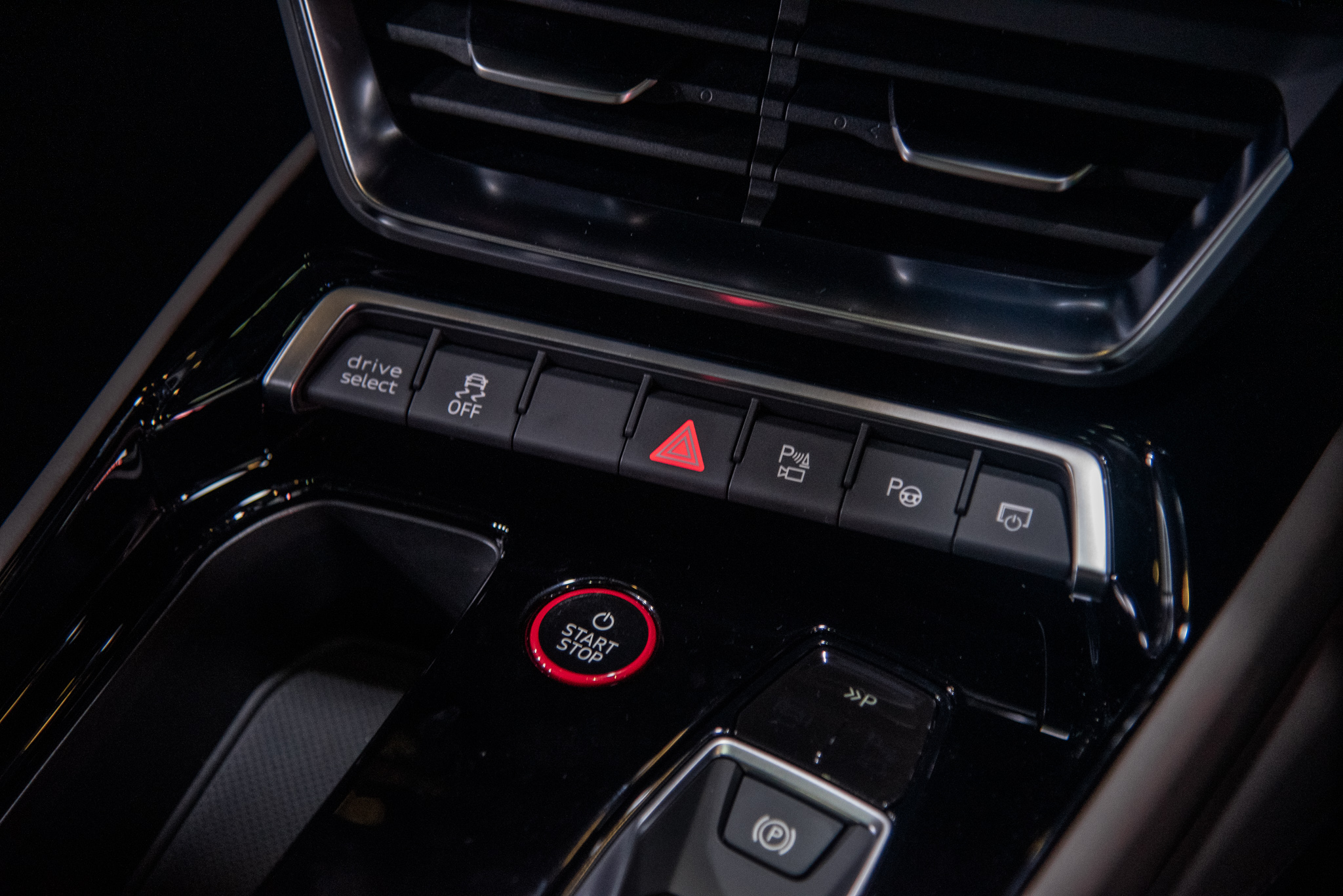
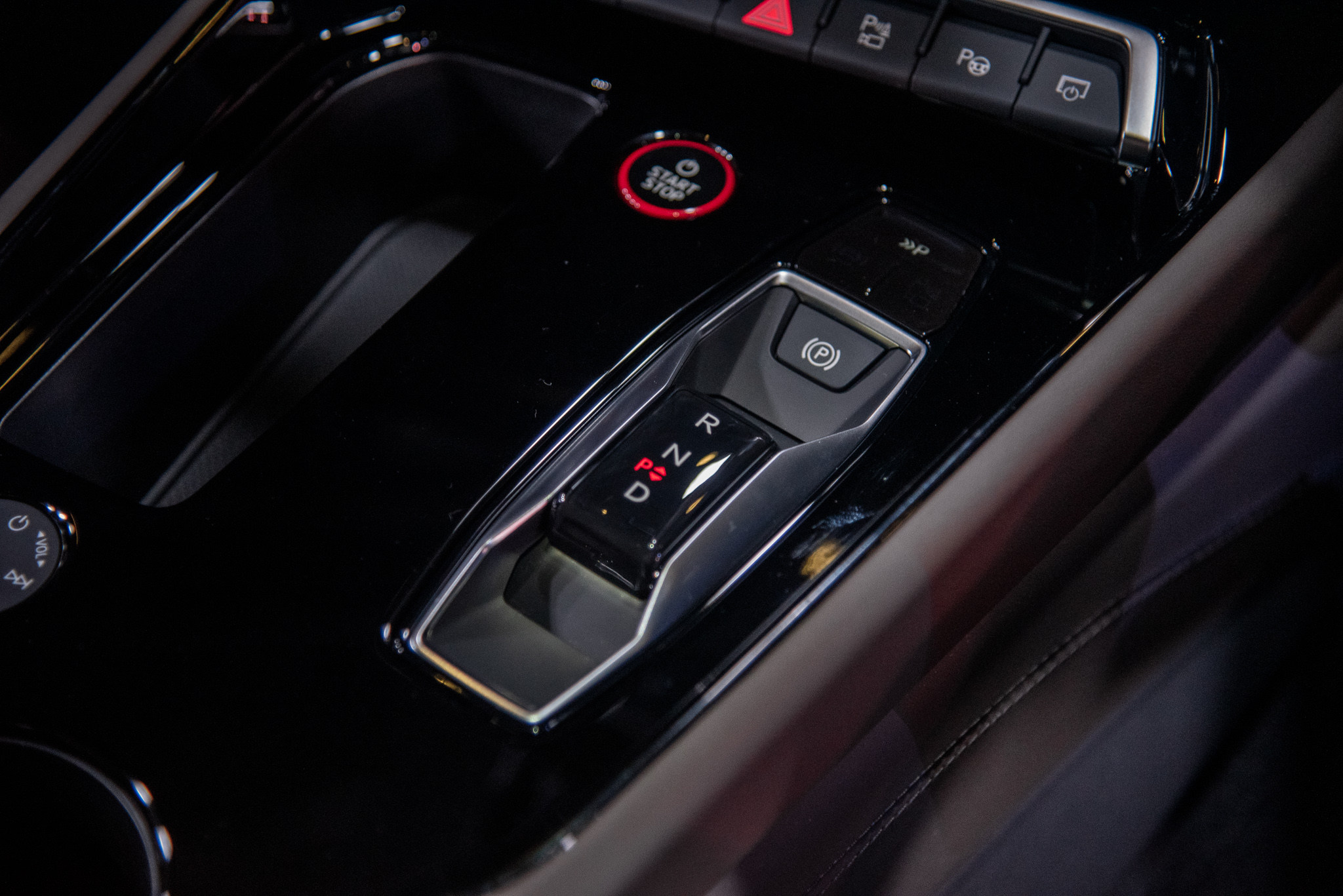
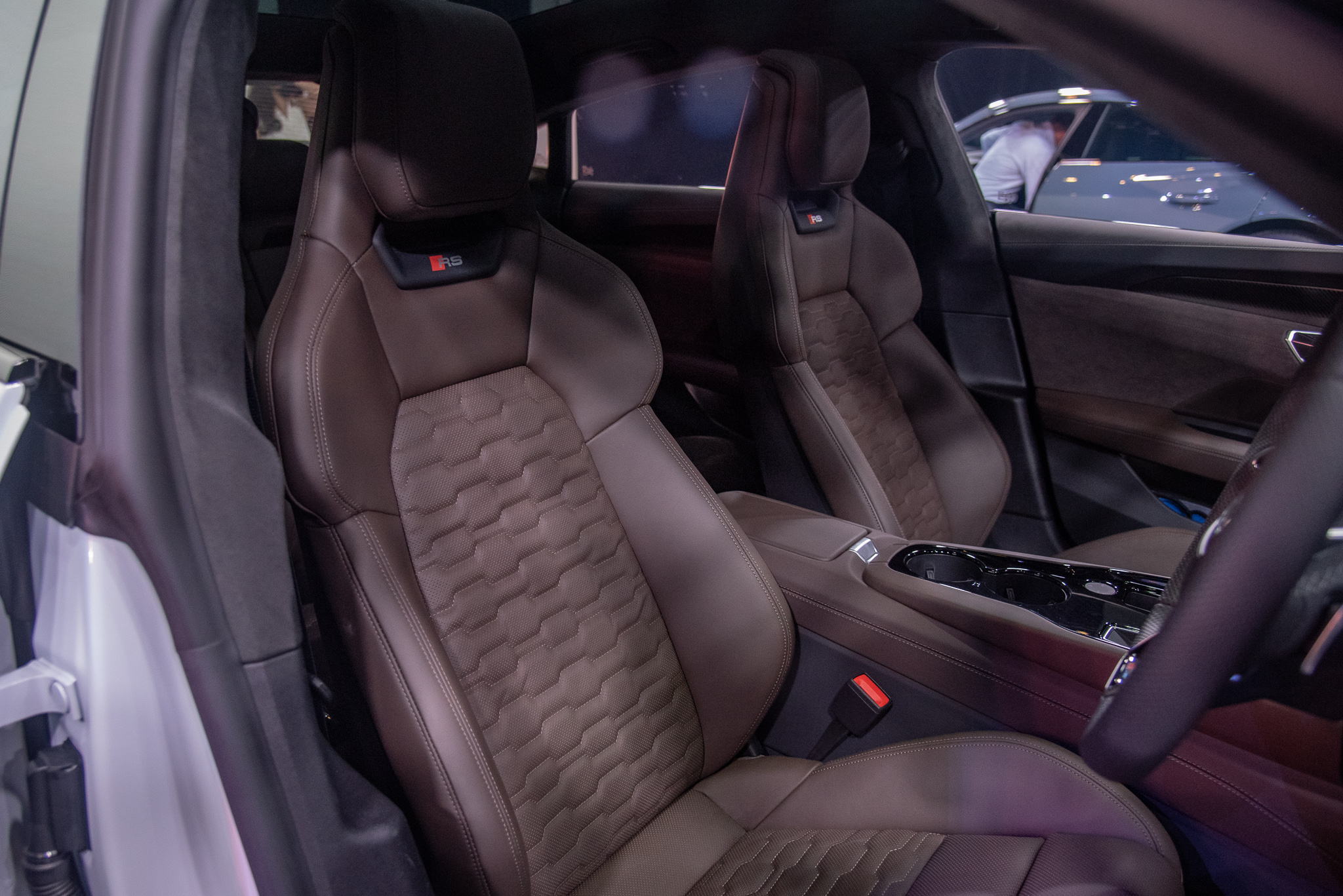
Gorgeous coupe body aside, the interior of the e-tron GT is surprisingly (and refreshingly) conventional.
Climate controls are operated by way of physical buttons nestled under the 10.1-inch infotainment screen, as are the various drive mode settings and volume controls.
Apart from the floating “glass look” gear selector, the rest of the cabin is conventional Audi.
Some may balk at the lack of touch screens or haptic touch buttons, but detractors of the digitalised age would be more than happy with the cabin of the e-tron GT.
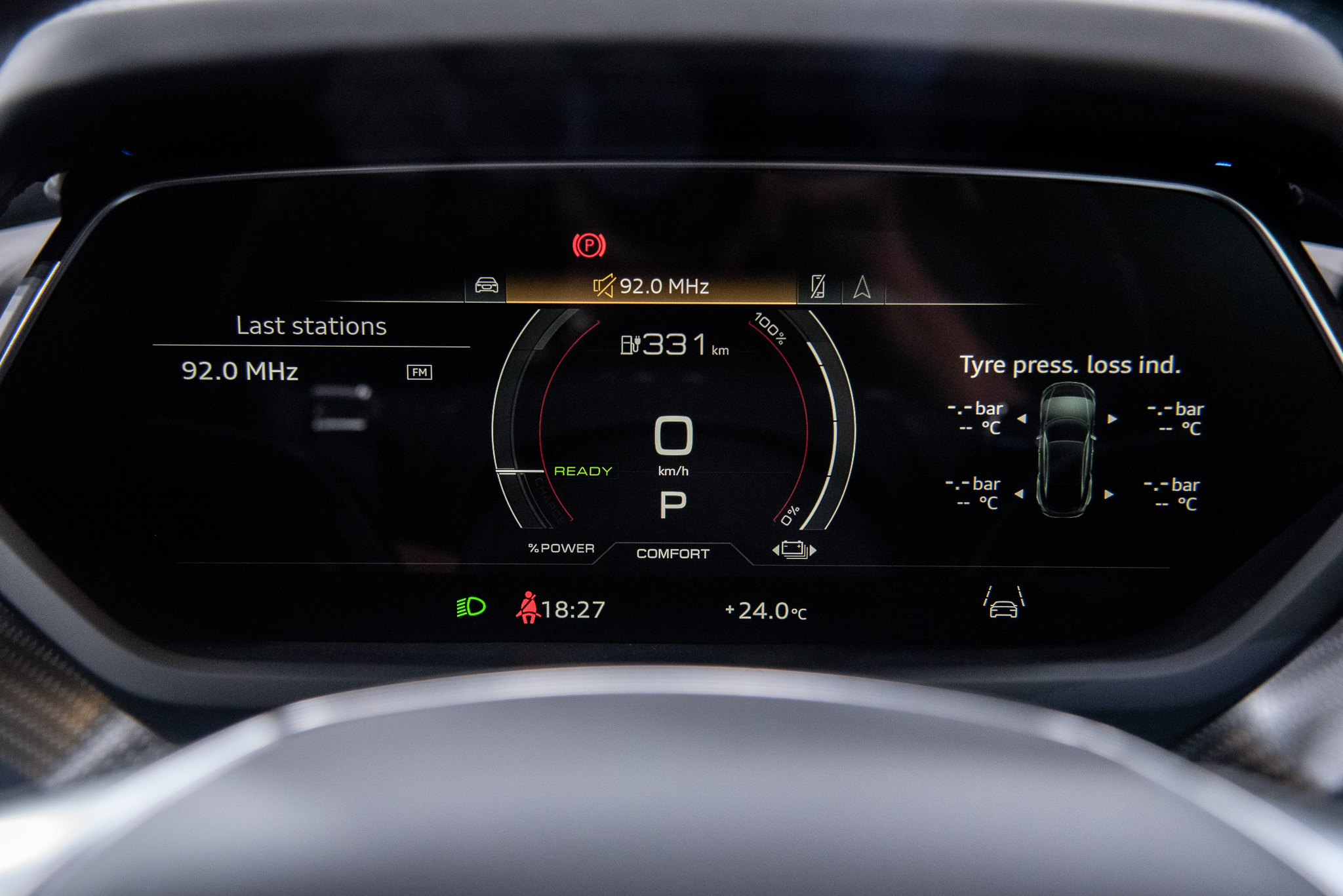
The two guises of the e-tron GT are as follows: the marginally more sedate e-tron GT with 475hp and 630Nm on tap, which does 0-100km/h in 4.1 seconds.
If that doesn’t quite tickle your pickle, you could go for performance RS e-tron GT variant, which sings to the tune of 590hp and 830Nm. 0-100km/h in the RS is dealt with in just 3.3 seconds.
If that isn’t enough kick for you, the RS e-tron GT has an overboost function that bumps power up to 630hp for additional gut-wrenching acceleration. But do take note that the overboost function only works for 5 to 10 seconds.
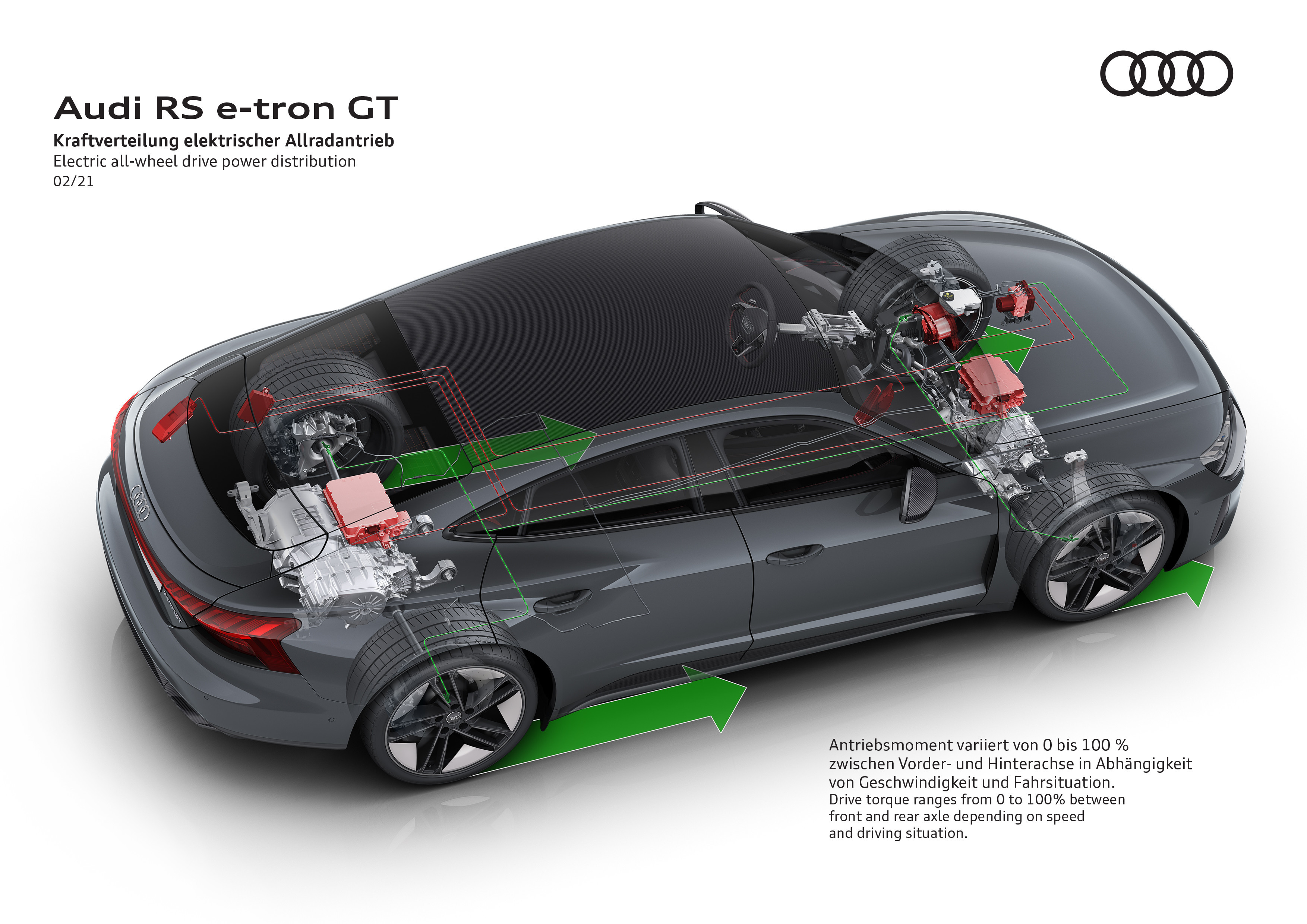
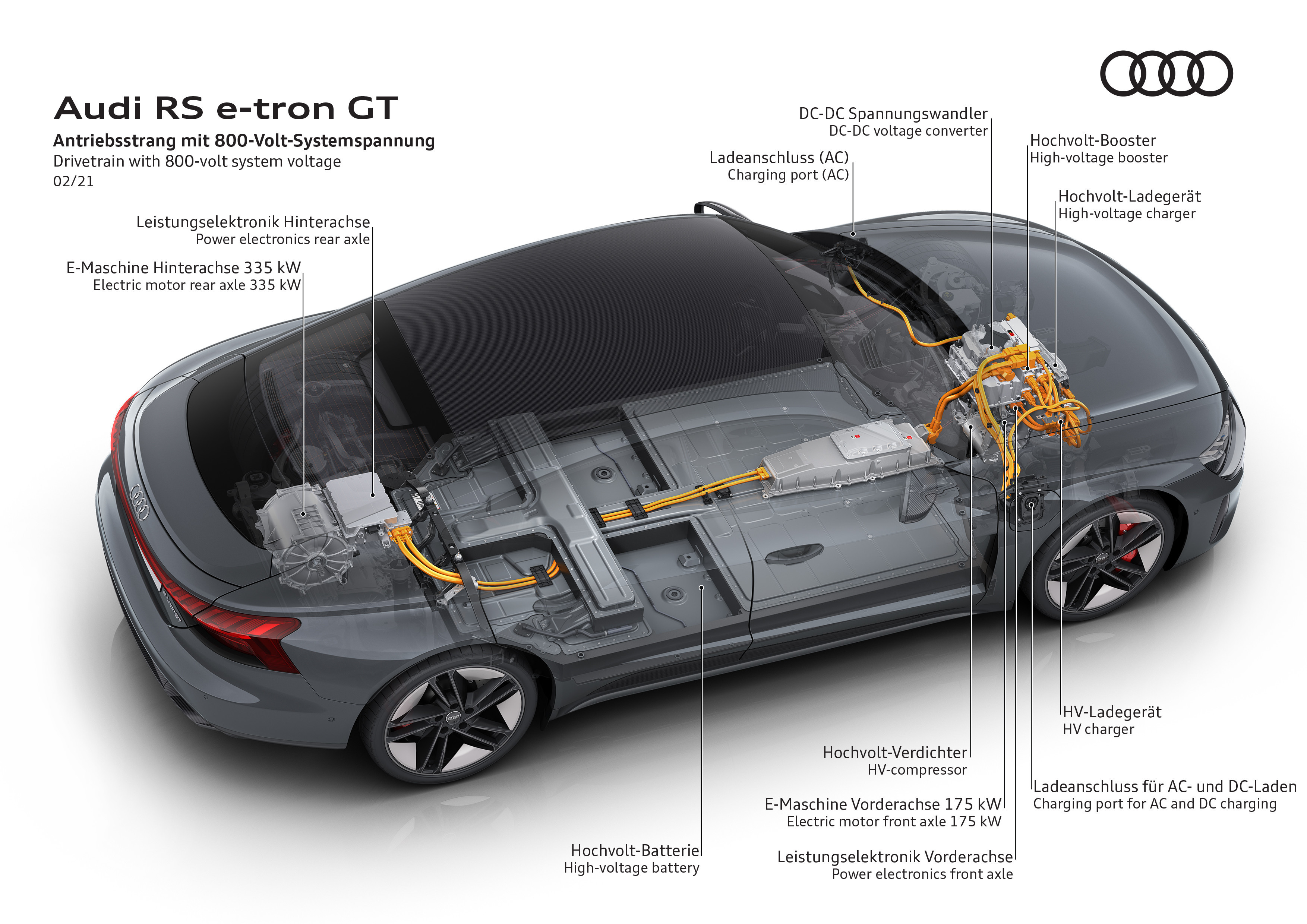
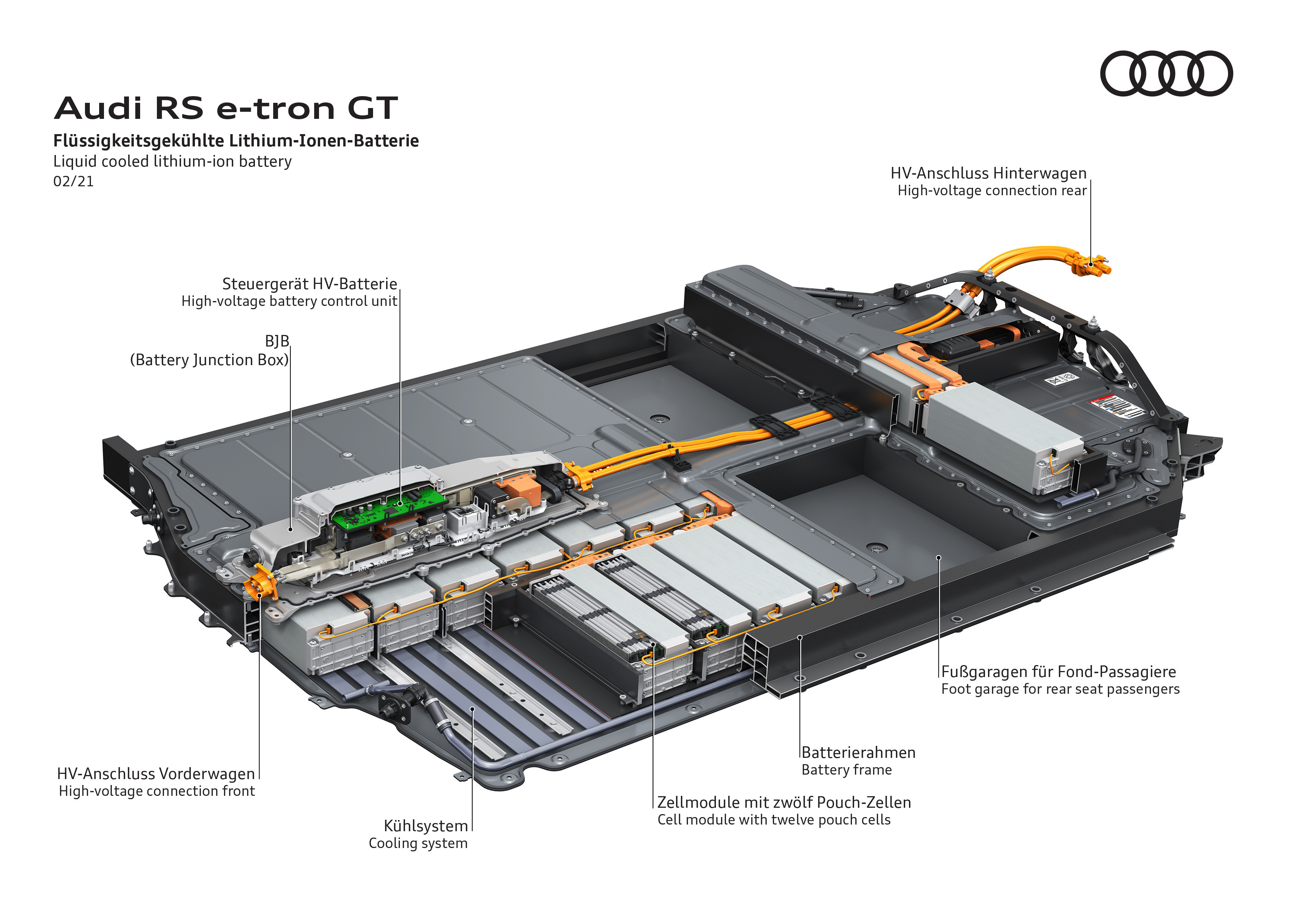
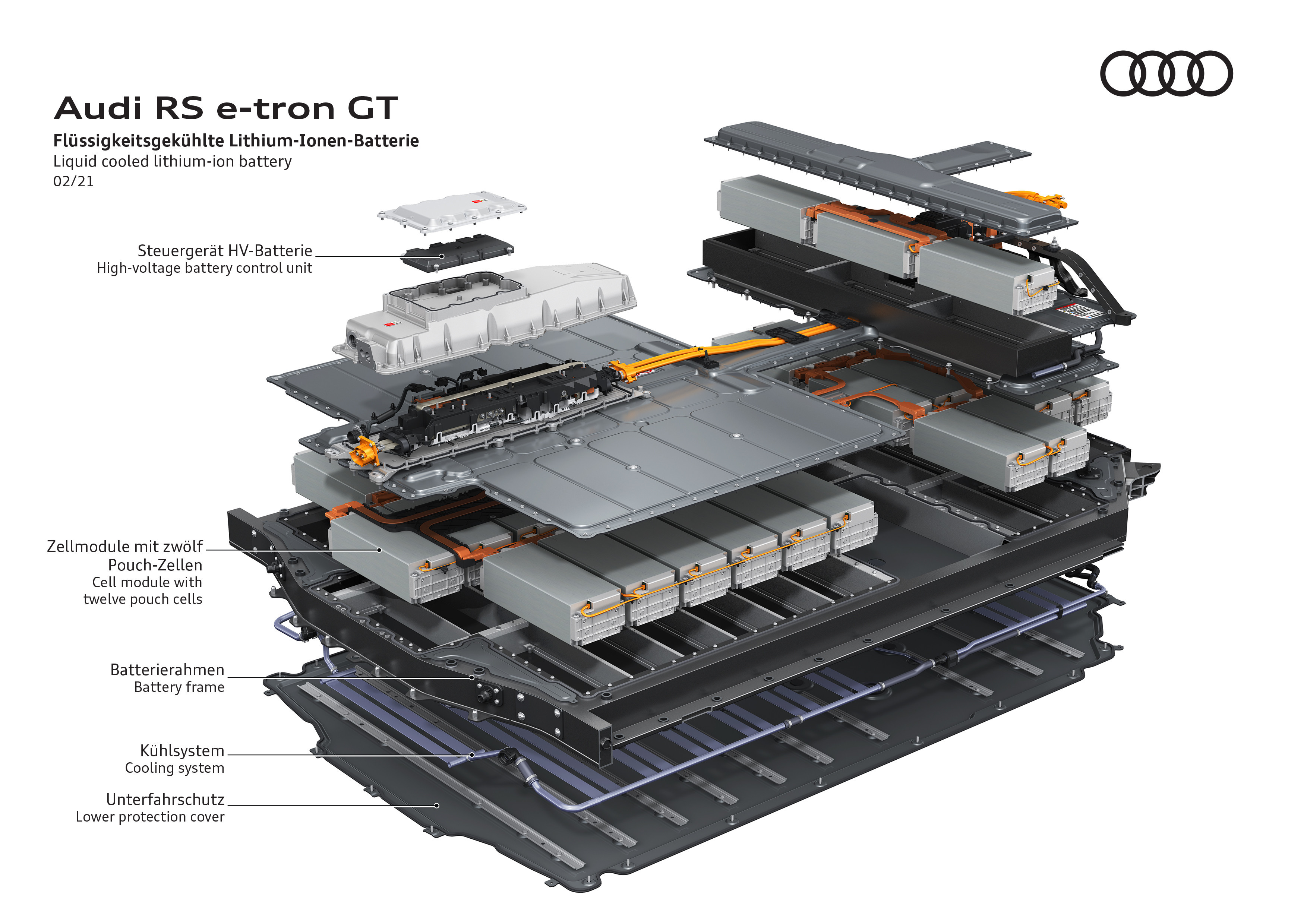
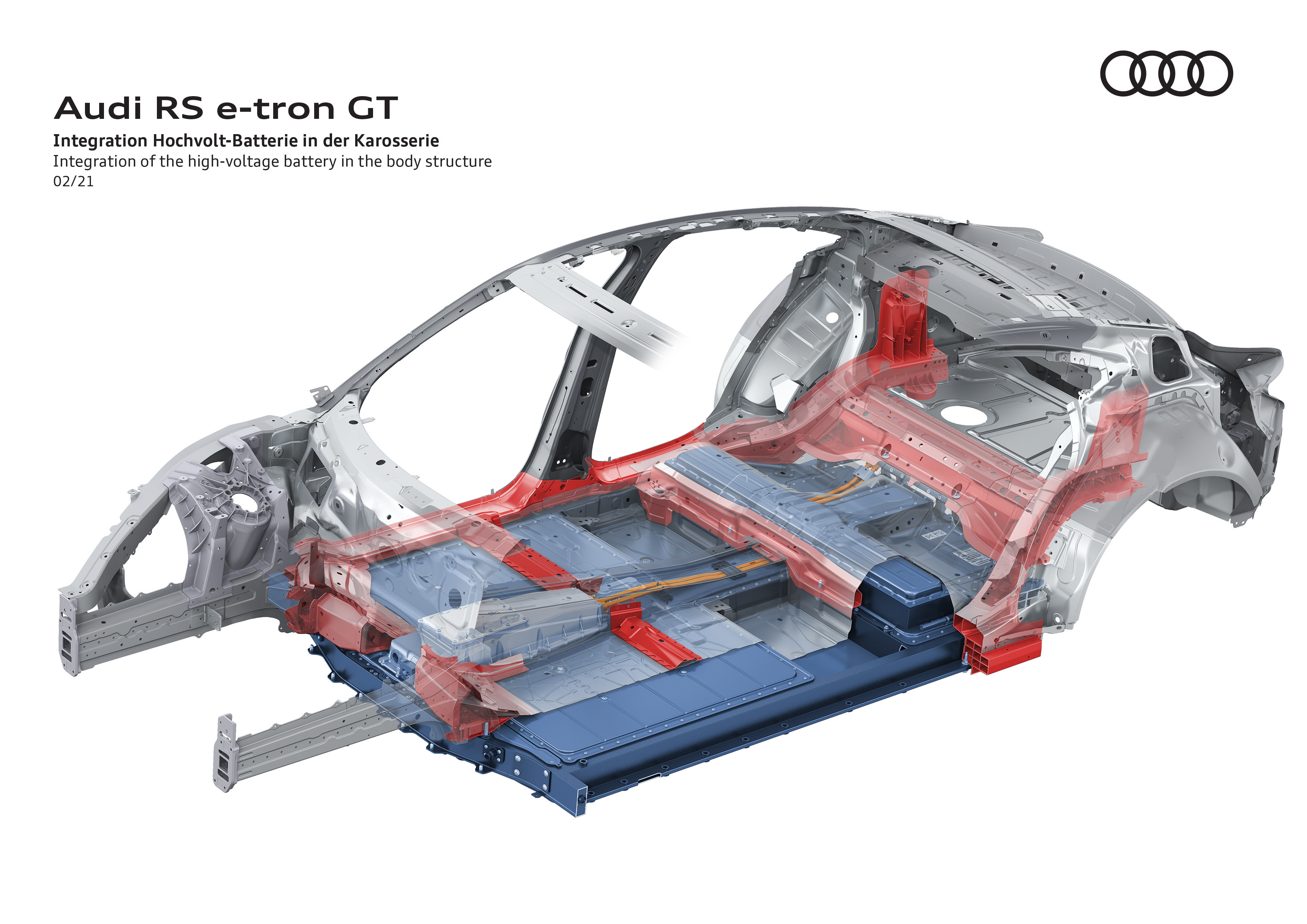
Like the Taycan, the e-tron GT uses an 800V battery pack that is kept at optimal temperatures using a water-glycerol cooling system that cools the batteries in four sections, enabling it to maintain consistent performance even after multiple acceleration runs.
Current e-tron GTs are fitted with a 11kW on-board AC converter, but a 22kW model is in the works, which ought to speed up charging times at AC charging stations.
The 800V battery architecture also enables the car to take in a maximum DC fast charge rate of 270kW, plenty more than any charging station available in the market.
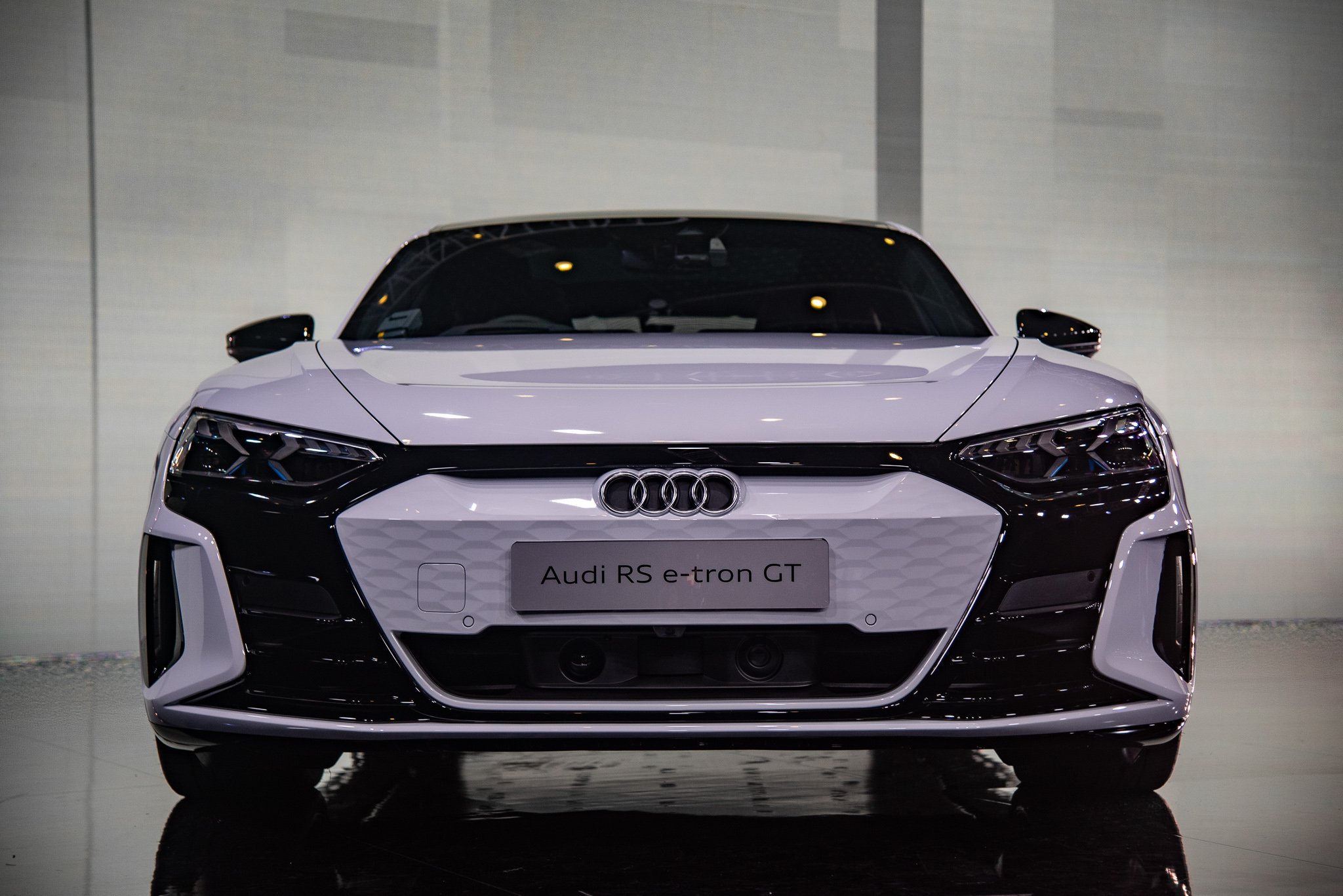
As of now, Audi has the largest number of BEVs in the premium segment here in Singapore, and the addition of the e-tron GT range brings the brand’s tally up to six.
With both the Audi e-tron GT and RS e-tron GT at the forefront of Audi’s e-tron range, things are progressively looking up for the EV scene in Singapore. The e-tron GT is further proof that EVs can be exciting, and look the part.
Photos Jay Tee & Audi Singapore






